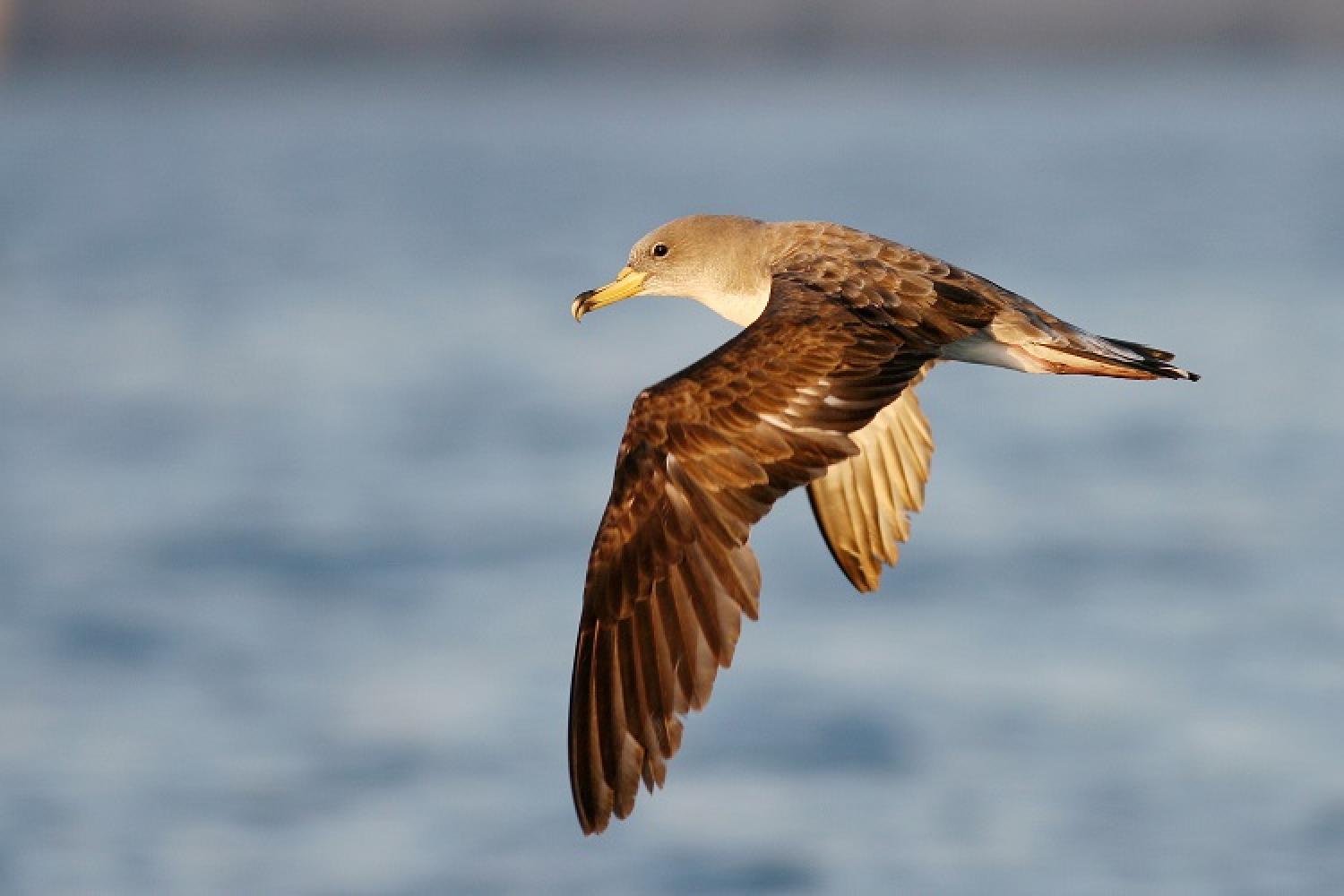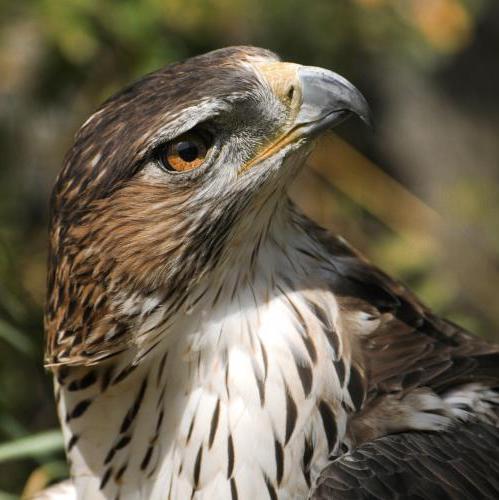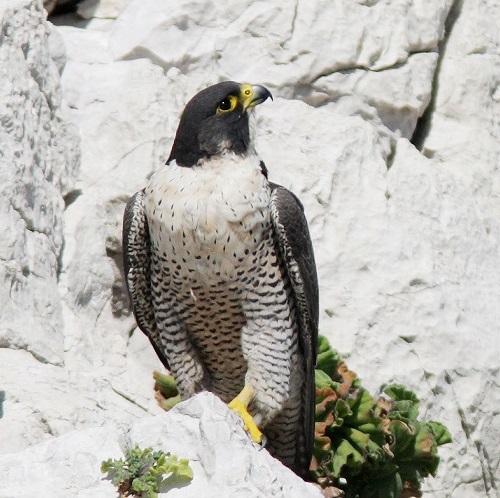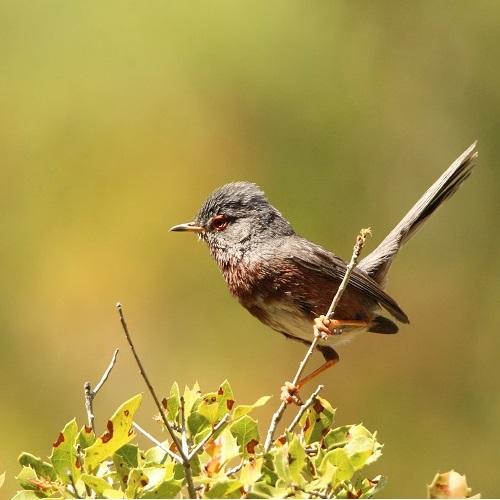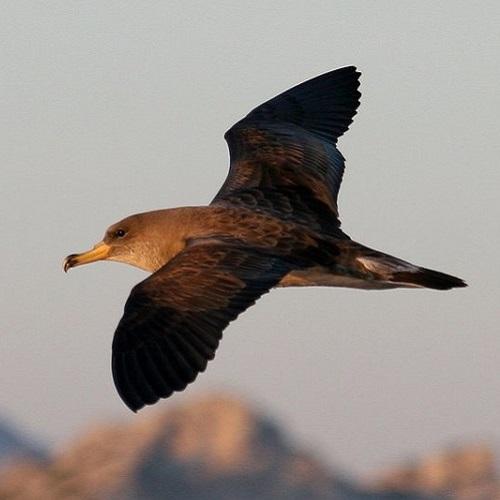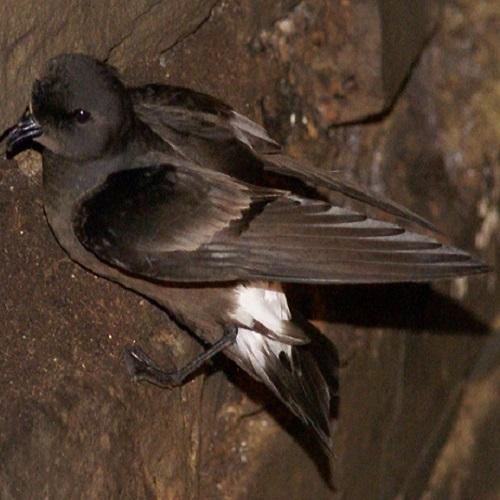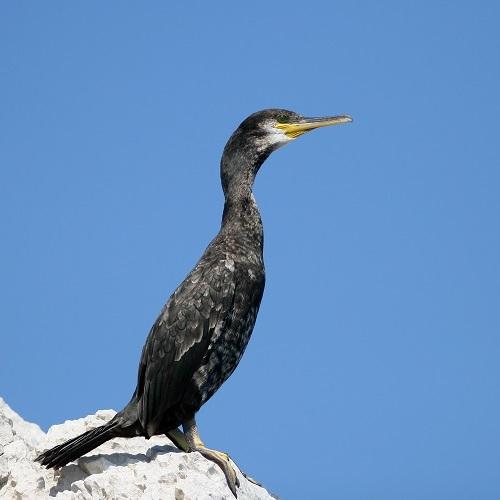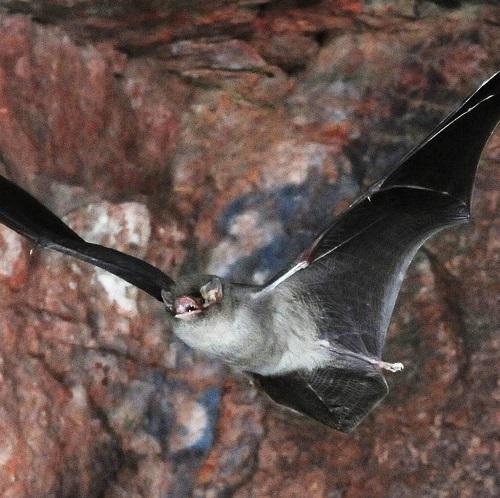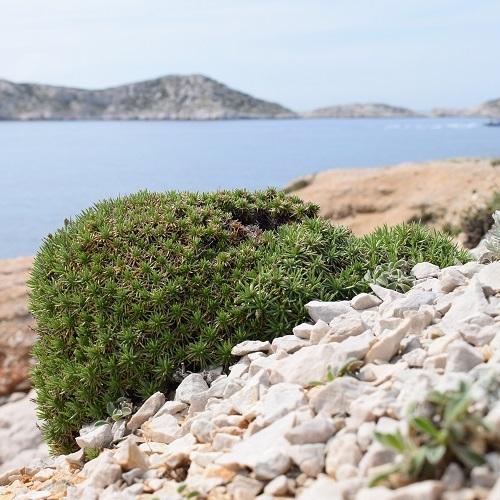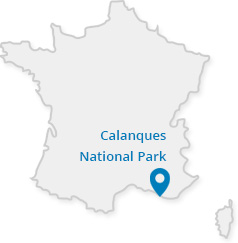Getting to know the species of the Calanques
Monitoring Bonelli's Eagle breeding
Bonelli's Eagle is a very rare breeder. Considered one of the most at-risk birds of prey in France, it is subject to a National Action Plan (PNA) for 2014-2023, for which the Conservatoire d’Espaces Naturels de PACA is the regional coordinator.
One of the PNA's objectives is to improve knowledge, in order to better manage and conserve Bonelli's Eagle. The monitoring of breeding populations is part of this objective. The monitoring of the breeding pair in the National Park is carried out by a Park agent, with the assistance of CEN PACA volunteers.
In 2020, the Bonelli's eagle pair successfully bred, with 2 young eaglets seen fledging. The breeding season for the 3 regions hosting the species continued the momentum seen in 2019 with the census of 3 additional pairs on historical or new sites in the Hérault, Gard and Var. This brings the population of the Bonelli's eagle in France to 41 couples, as compared to 33 in 2015.
Key figures: 2 eaglets seen fledging.
Monitoring the Peregrine falcon's breeding
The Peregrine falcon is a species of community interest, protected at national level, classified as endangered on PACA's red list of breeding birds (2016) and it has a very high local heritage value. A diurnal bird of prey, it is strictly a rock bird and nests on the coastal cliffs of the Calanques. In order to gain knowledge of the evolution of the population of Peregrine falcons in the National Park, a breeding monitoring programme consisting of counting the number of breeding pairs and the production of young is being carried out on the continental coastal cliffs and the islands of Marseille. In 2020, 13 known Peregrine falcon sites were monitored, revealing 7 breeding pairs spread over the islands and the mainland coastline.
Key figures: 7 breeding couples on 13 known sites
Common birds: participation in the STOC-EPS programme
The Centre de Recherches par le Baguage des Populations d’Oiseaux (Centre for research via bird population ringing) (CRBPO) at the Muséum National d’Histoire Naturelle is coordinating a programme for the Temporal Monitoring of Common Birds (STOC programme) designed to assess spatial and temporal variations in the abundance of breeding populations of common birds on a national scale. It is based on listening points (STOC-EPS, Simple Point Sampling) carried out each spring. All birds seen and heard are recorded and a habitat survey is also carried out.
A STOC square, corresponding to 12 listening points has been implemented in the National Park since 2010. In 2020, 23 species were contacted. Warblers, nightingales and Ortolan buntings remain the most regularly observed species on the circuit. Of note was the almost complete absence of swifts and crag martins this year.
Trends in breeding numbers on a national scale can be seen on the STOC programme website.
Key figures: 23 species contacted
Monitoring the population dynamics of Scopoli's Shearwater and Yelkouan Shearwater
The Scopoli's Shearwater and Yelkouan Shearwater are distant cousins of the Albatross and are species of community interest, protected at national level and classified as threatened on PACA's red list of breeding birds (2016). The National Park has a strong responsibility for the conservation of shearwater populations, an emblematic species with high heritage value. The population dynamics of the Scopoli's Shearwater and Yelkouan Shearwater in the Marseille archipelago have been studied for many years via breeding monitoring and capture-mark-recapture operations (CMR - personal ringing programme under the aegis of CRBPO).
In 2020, CMR operations enabled the capture of 278 Scopoli's Shearwater individuals on the Riou and Frioul archipelagos and 49 Yelkouan Shearwater individuals on the Riou archipelago. Monitoring showed that a minimum of 329 Scopoli's Shearwater chicks and 15 Yelkouan Shearwater chicks fledged from the colonies on the islands of Marseille.
The breeding success of the shearwaters is on average above the critical threshold of 0.5 chicks per breeding pair but remains fragile, depending on the island. The Yelkouan shearwater population reached the critical threshold of 0.43 chicks per pair this year, as did the Scopoli's shearwater at the Frioul archipelago at 0.51. Predation by introduced predators such as feral cats and black rats as well as human disturbance are among the causes cited for breeding failure.
Key figures:
- 329 Scopoli's shearwater chicks
- 15 Yelkouan shearwater chicks seen fledging
- The breeding success of the shearwaters is on average above the critical threshold of 0.5 chicks per breeding pair, but remains fragile, depending on the island.
- See the table and graph
Monitoring the breeding population of the Mediterranean storm petrel
The Mediterranean storm petrel, an endemic subspecies of the Mediterranean, is the smallest pelagic bird in Europe. In France, the storm petrel nests only on the Corsican islands and the Riou archipelago. However, its distribution is still poorly known due to its discreet habits and difficult access to its nesting sites. The breeding population is monitored on the Riou archipelago and consists of counting the number of burrows occupied by the species and assessing whether the pairs present have reproduced.
In 2021, a minimum of 6 to 8 breeding pairs were recorded on the archipelago. However, predation by the black rat and the Yellow-legged gull have a significant impact on the breeding success of this species.
Key figures: 6 to 8 breeding pairs recorded
Monitoring Desmarest's Cormorant's breeding numbers
The Desmarest's Cormorant, a sub-species of the European Shag, is a community interest species, protected at national level and classified as endangered on PACA's red list of breeding birds (2016). Monitoring of breeding, consisting of counting the number of breeding pairs and the production of young has been implemented on the Marseille islands since 1999 in the case of the Riou archipelago and 2010 for the Frioul archipelago. Breeding numbers are consistently increasing on the two archipelagos, although there has been a slight drop in the number of breeding pairs on the Riou archipelago this year. For the archipelagos as a whole, a total of 39 breeding pairs were counted with a minimum of 45 young fledged. The Cormoran de Desmarest continued to settle on the continental coastline, leading to the implementation of measures to restrict climbing in the vicinity of nesting sites.
Key figures:
- 39 breeding pairs recorded
- 45 young fledged
- See the graph
Monitoring the migratory transit of the Common Bent Wing Bat
The Common bent wing bat is a gregarious bat that is strictly cavernous and Mediterranean. It is a species of community interest, considered a priority species in the National and Regional Action plan for bats (PNA and PRAC) and presents a very strong regional and local conservation challenge.
The Groupe Chiroptères de Provence (Provence Bat Group) (GCP) coordinates the regional monitoring of the major bat breeding sites in the Provence-Alpes-Côte d’Azur region. All the populations in the PACA region seem to be interconnected via a network of spring and autumn transit sites. Transit corresponds to the phases of movement between the periods of birthing and hibernation. The populations of the two transit sites in the National Park (Grotte Rolland and Grotte des Espagnols – classified as a departmental issue) are monitored in the spring and autumn by the GCP and National Park agents. This monitoring consists of a visual count when leaving the night shelter, assisted by an automatic ultrasound recorder.
For the last 2 years, monitoring has tended to show a decrease in the numbers of bats in Grotte Rolland, which may be due to disturbance caused by human use of the cave.
Plantago subulata – monitoring population dynamics on Le Frioul (numbers and conservation status)
Plantago subula is a regionally protected plant species, with a very high local conservation value and is characteristic of the phrygana plant formation, a habitat of community interest (Natura 2000). Although this species is relatively common on the continental coast, it is becoming rare on the islands. The first monitoring initiated in 2003 by the CEN PACA in 12 known locations on Le Frioul showed a 72% drop in numbers between 2003 and 2015 (521 and 146 individual living plants respectively). This result has made it possible to target the need to strengthen this species via the LIFE HABITATS CALANQUES project. In 2018 the Calanques National Park - with the support of scientists from the CEFE (John Thompson and Perrine Gautier) and the IMBE (Laurence Affre) - formalised and drafted a protocol for monitoring the conservation status of Plantago subulata on Le Frioul.
An inventory of the population, its conservation status and spatial distribution was carried out in 2018 with tagging and mapping of all plants. The monitoring undertaken since 2019 shows a continuing decline in the population, with 73 individual plants remaining in 2020 (76 in 2019).
This situation is very worrying for the maintenance of the natural population of Plantago subulata on Le Frioul. Although no cause has been formally established for this decline in Plantago subulata populations, there are strong suspicions that climate change, and in particular the lengthening of drought periods and the increase in storms is increasing exposure to sea spray.




